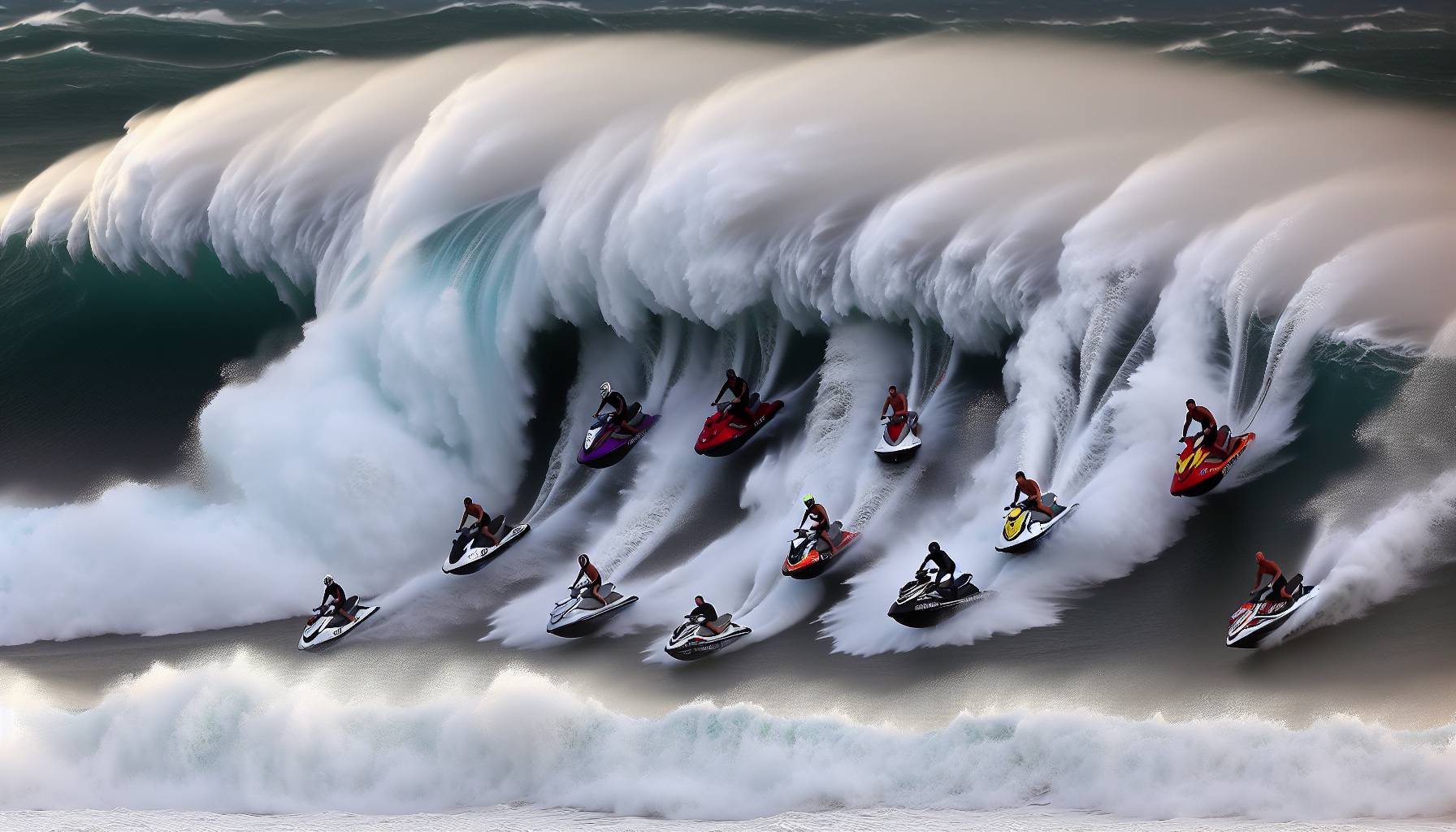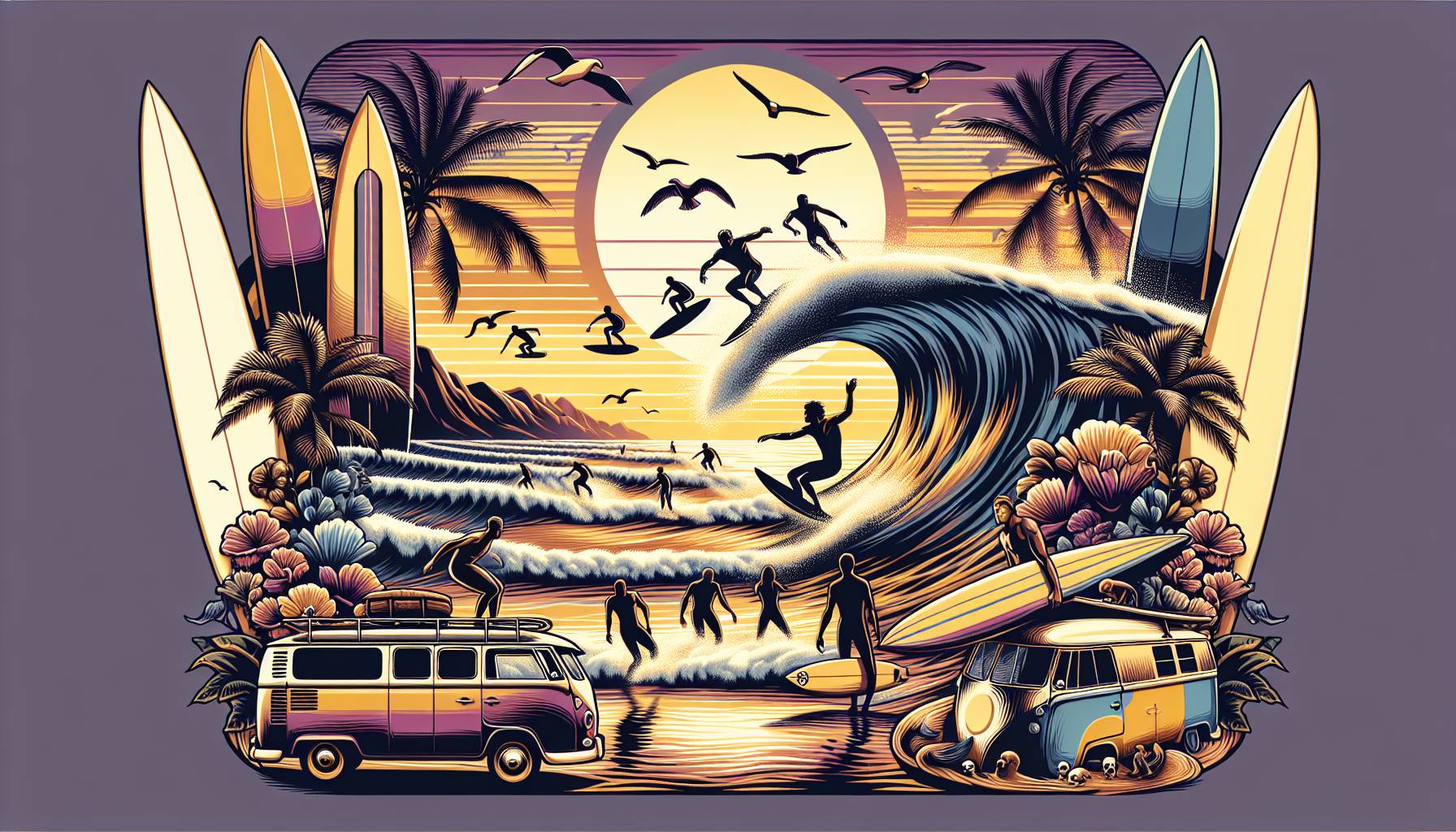
Understanding embedded video content
Embedded video content has become a popular way to share information online, especially in the surfing community. Instead of relying solely on text, videos allow for a more immersive experience, capturing the movement of the waves, the techniques of skilled surfers, and the breathtaking coastal scenery. This format is particularly effective for tutorials, event highlights, and surfboard reviews, as it provides a visual demonstration that words alone cannot fully convey.
When a video is embedded in an article, it is typically hosted on a platform like YouTube or Vimeo and displayed within the webpage. This allows viewers to watch the content without needing to leave the site, creating a seamless user experience. For Australian surfers, embedded videos are a great way to stay updated on local surf conditions, watch competitions, or learn new skills from professional riders.
However, while videos are engaging, they often lack accompanying text that summarises or explains their content. This can be a challenge for those who prefer reading or need a quick reference without watching the entire video. Additionally, search engines rely on text to index and rank content, meaning that articles with only embedded videos may not perform as well in search results. To make video-based content more accessible and effective, it is often necessary to provide a written summary or transcription alongside the embedded media.
Challenges in rewriting video-based articles
Rewriting an article based on an embedded video presents several challenges, particularly when the video lacks a transcript or detailed description. Unlike traditional text-based content, videos require careful listening and interpretation to extract key points, which can be time-consuming. For surfing-related content, this challenge is even greater, as videos often rely on visual demonstrations of techniques, wave conditions, and board performance that may not be easily translated into words.
Another difficulty is ensuring accuracy. Surfing videos frequently feature expert commentary, technical jargon, and nuanced explanations that require a deep understanding of the sport. Misinterpreting or omitting crucial details can lead to misleading or incomplete information. Additionally, some videos may include background music, ambient noise, or heavy accents that make it harder to discern spoken words, further complicating the rewriting process.
Context is also a key factor. Many surfing videos are designed to be visually engaging, relying on slow-motion footage, aerial shots, and action sequences to convey their message. Without the visual element, it can be challenging to capture the same excitement and energy in written form. Writers must find ways to describe the movements, techniques, and emotions conveyed in the video while maintaining clarity and readability.
Furthermore, embedded videos often lack structured narratives, making it difficult to create a cohesive written article. Unlike traditional articles with clear sections and headings, videos may jump between topics, feature multiple speakers, or include unscripted commentary. This requires the writer to organise the information logically, ensuring that the rewritten content flows smoothly and remains engaging for readers.
For Australian surfers looking for written content based on video material, these challenges highlight the importance of providing well-structured summaries or transcriptions. A well-written article should not only capture the essence of the video but also enhance its accessibility by offering clear explanations, additional insights, and relevant context that may not be immediately apparent from the visuals alone.
How to provide text for article rewriting
When providing text for article rewriting, it is essential to ensure that the content accurately reflects the key points of the original video while also making it accessible to readers. The first step is to watch the video carefully, taking notes on the main topics covered, important quotes, and any technical details relevant to the subject. For surfing-related content, this might include descriptions of wave conditions, board specifications, or step-by-step breakdowns of manoeuvres demonstrated in the footage.
One effective approach is to create a structured summary that follows the natural flow of the video. This means identifying the introduction, main discussion points, and conclusion, then organising the text accordingly. If the video features an instructional segment, breaking it down into clear, numbered steps can help readers follow along more easily. Similarly, if the video includes expert commentary, paraphrasing key insights while maintaining the original meaning ensures that the rewritten article remains informative and engaging.
For those providing text for rewriting, including timestamps can be helpful. By noting the time in the video when specific topics are discussed, writers can reference the footage more efficiently and ensure accuracy in their summaries. This is particularly useful for technical surfing content, where precise descriptions of movements and techniques are crucial.
Another important aspect is adding context where necessary. Videos often assume a certain level of prior knowledge, especially in niche topics like surfing. When rewriting the content, it may be beneficial to include brief explanations of terms, background information on the surfers featured, or additional insights into the surf conditions at the time of filming. This not only enhances readability but also makes the article more valuable to a broader audience, including beginners who may not be familiar with all the terminology.
Maintaining a natural and engaging tone is key. While the goal is to accurately represent the video’s content, the rewritten text should not feel like a dry transcription. Instead, it should capture the excitement and energy of the original footage, using descriptive language to bring the scenes to life. For Australian surfers, this means evoking the feeling of paddling out at dawn, the rush of catching a perfect wave, or the camaraderie of a local surf competition—all elements that make surfing such a dynamic and captivating sport.
Understanding embedded video content
Alright, legends, let’s talk about embedded video content. You’ve probably seen it everywhere—those slick little videos that pop up right in the middle of an article, ready to roll with just a click. No need to jump to another site, no distractions, just straight-up content delivered right where you are.
These embedded videos are a game-changer, especially when you’re chasing the latest surf reports, fishing tips, or epic adventure clips. They keep things flowing, making sure you don’t have to wade through a sea of links just to get to the good stuff. Plus, they bring a whole new level of engagement—because let’s be real, sometimes watching a pro angler land a monster catch is way better than reading about it.
But here’s the catch—sometimes an article is just a video with no actual text. That’s where things get tricky if you’re looking for a written breakdown or a fresh take on the content. Without text, there’s nothing to rewrite, just a video sitting there, waiting to be watched. And while that’s great for a quick hit of action, it doesn’t help much if you’re after a deep dive into the details.
So, whether it’s a surf tutorial, a fishing masterclass, or an epic travel vlog, embedded videos are a solid way to deliver content. Just don’t expect much in the way of words if the article is nothing but a video link. That’s like expecting a wave to break perfectly every time—sometimes, you just get a closeout.
Providing text for article rewriting
Alright, so when it comes to rewriting an article, you need some actual words to work with. If the whole thing is just a video, well, that’s like trying to fillet a fish that’s still swimming—there’s nothing solid to grab onto.
Now, if there’s at least a bit of text alongside the video, that’s a different story. You can take the key points, add some flair, maybe throw in a bit of local knowledge, and turn it into something fresh. But if all you’ve got is a video link, there’s not much to rewrite—unless you’re planning to transcribe the whole thing, and let’s be honest, no one’s got time for that.
For those who love a good surf report or fishing guide, having a solid write-up alongside a video is gold. It means you can skim through the details, pick up the key takeaways, and then decide if you want to watch the full clip. It’s all about giving people options—because sometimes you’re in the mood to watch, and other times, you just want the quick version so you can get back to chasing waves or reeling in the next big one.
So, if you’re looking to rewrite an article, make sure there’s actually something to work with. Otherwise, you’re just staring at a video, waiting for words to magically appear—and that’s about as effective as trying to paddle out on a flat day.

